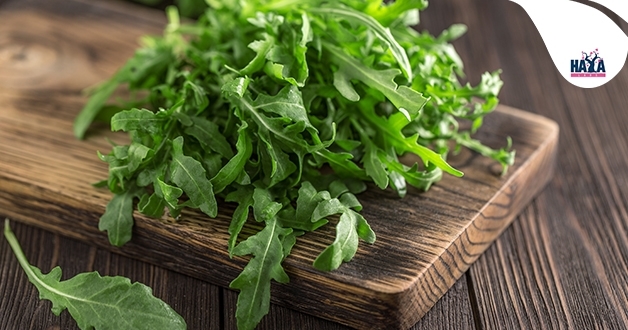
Let's open the curtain and find out what the rucola is useful for and what its uses are in the kitchen. Although it sounds exotic, the rucola is actually an unpretentious plant growing in Europe, as well as in Asia Minor and North Africa. The plant is not particularly capricious and can be grown even in the yard. It needs light and regular watering.
The good news is that the delicious rucola is an extremely dietary food. 100 grams of the plant contains only 26 calories. Regular consumption of arugula supplies the body with valuable vitamins A and C, which also act as powerful antioxidants. In this leafy vegetable also contains B vitamins. Among them are anti-stress Vitamin B1, as well as Vitamin B9 (also known as folic acid or folacin), which is essential for the metabolic processes and has some anti-cancer effect.
This vitamin, presented in the rucola, facilitates the easier separation of cells.
Therefore, it is recommended that rucola should be added to the meals of pregnant women in particular.
Rucola is a good source of potassium. So, eating more rucola will ensure the normal functioning of the heart muscle and nervous system. The iron in the plant takes care of reducing the risk of anemia.
The good surprise is that the rucola contains Omega-3 fatty acids, whose role is to maintain a healthy balance in the body.
The taste characteristics of fine petals are no less significant. The rucola has a specific nut flavor and a slightly spicy taste, giving the freshness of the dishes. It is advisable to add to salads. It is best to have them flavored with olive oil and balsam vinegar. The goal is to preserve and even strengthen its health functions.
Its use in culinary is not limited to salads. Luttenca rucola is added to some pizzas and meats. Pressing the rucola will get a great pesto that you can add to pasta sauce or risotto.
.

